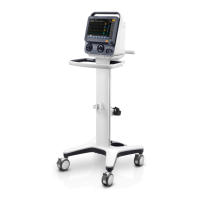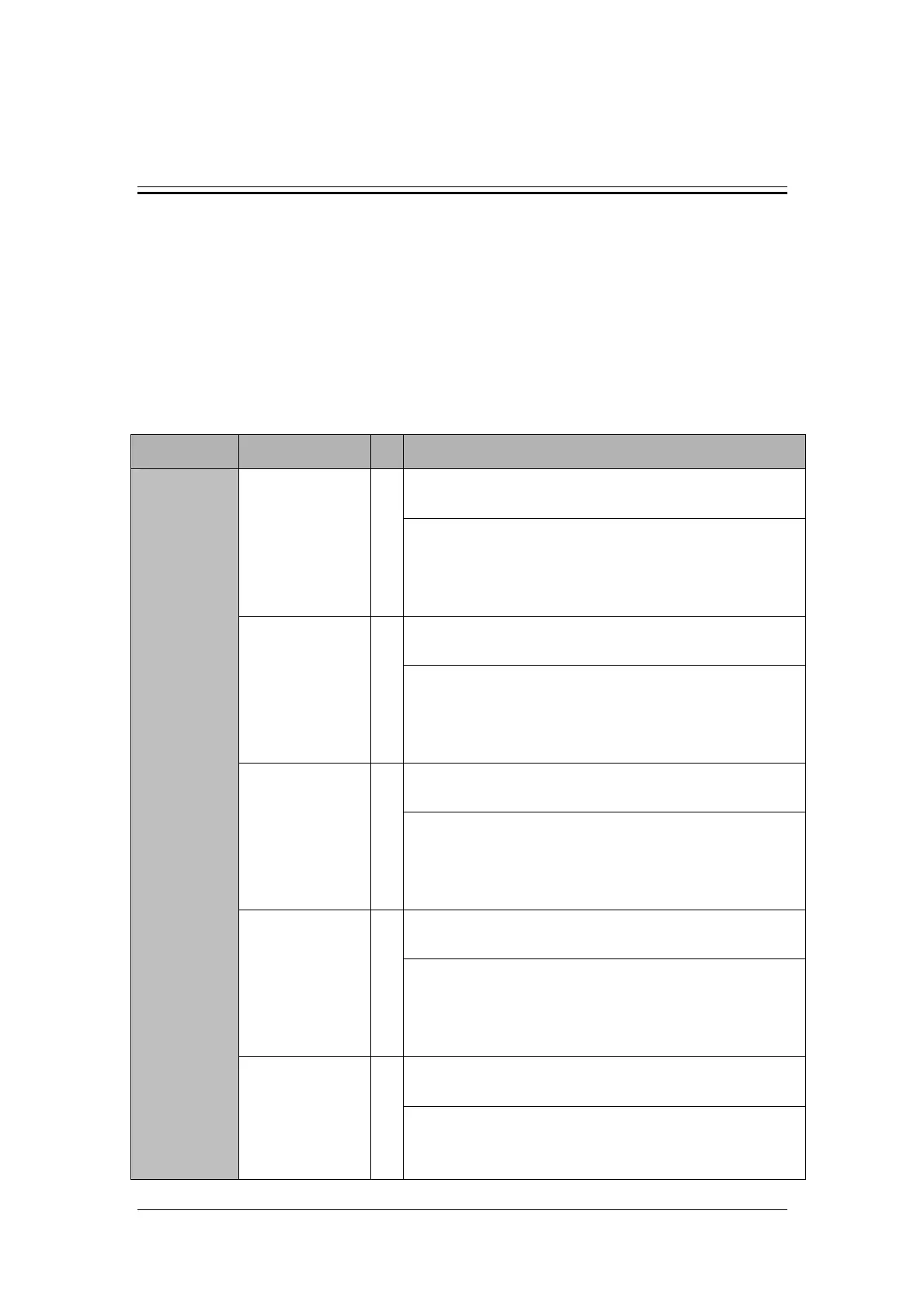D-1
D Alarm Messages
This chapter lists physiological and technical alarm messages.
Note that in this chapter:
Column P stands for the default alarm level: H for high, M for medium and L for
low.
For each alarm message, corresponding actions are given instructing you to
troubleshoot problems. If the problem persists, contact your service personnel.
D.1 Physiological Alarm Messages
Source Alarm message P Cause and action
Ventilator
parameters
Paw Too High H
The airway pressure exceeds the set pressure high alarm
limit.
1. Check the patient.
2. Check the ventilation parameter setup.
3. Check the alarm limits.
4. Check the patient tubing for occlusion.
FiO
2
Too High H
The inspired O
2
concentration is greater than the FiO
2
high
alarm limit for at least 30s.
1. Check the ventilation parameter setup.
2. Check the alarm limits.
3. Check the HEPA filter for occlusion.
4. Calibrate the O
2
sensor.
FiO
2
Too Low H
The inspired O
2
concentration is less than the FiO
2
low
alarm limit for at least 30s or is less than 18 %.
1. Check the ventilation parameter setup.
2. Check the alarm limits.
3. Check the O
2
supply.
4. Calibrate the O
2
sensor.
O
2
% Too High H
During O
2
therapy, the O
2
concentration is greater than the
O
2
% high alarm limit for at least 30s.
1. Check the ventilation parameter setup.
2. Check the alarm limits.
3. Check the O
2
supply.
4. Calibrate the O
2
sensor.
O
2
% Too Low H
During O
2
therapy, the O
2
concentration is less than the
O
2
% low alarm limit for at least 30s or is less than 18 %.
1. Check the ventilation parameter setup.
2. Check the O
2
supply.
3. Calibrate the O
2
sensor.

